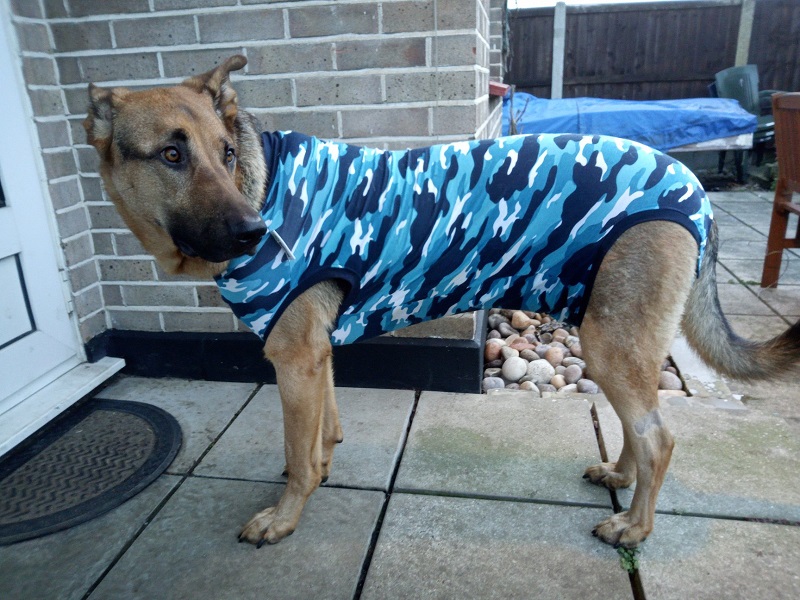Artificial Urethral Sphincter Case
Clinical Connections – Summer 2018
A dog with a suspected urethral sphincter mechanism insufficiency (USMI) had an artificial urethral sphincter (AUS) placed at RVC Small Animal Referrals.
Cross-breed Radar, who was three years old at the time of the surgery, had been incontinent throughout the two years he had been with his his owners. Though he was able to urinate normally, he dripped urine continuously between urinations.
Although no definitive structural cause for his incontinence were found, the AUS was placed to treat a presumptive diagnosis of USMI. The procedure proved effective and he recovered well without any complications. The AUS is a device that is fitted surgically and consists of a cuff that is placed around the urethra (tube from the bladder to outside) and a subcutaneous port.
The port can be accessed with a special non-coring needle (Huber needle), this allow us to gradually inflate the cuff which helps to maintain urinary continence by putting pressure around the outside of the urethra. It is similar to devices that are placed for humans with incontinence. It has been used successfully in female dogs but has only rarely been used in male dogs.
Prior to admission to the RVC, medical management had been attempted. Incurin had proved completely ineffective for Radar and, although Propalin initially reduced the urine dripping, it became less effective. It was stopped two weeks prior to admission to the RVC, which was in January. Radar was very lucky to have been adopted by very kind and tolerant people who were managing his incontinence but it was definitely affecting his quality of life as he was always leaking urine and constantly licking around his prepuce.

Diagnostic tests and treatment at the RVC
Intravenous urography and retrograde double contrast urethrocystogram were conducted and no evidence of ureteric abnormalities were found. The prostatic urethra was wide with an irregular margin.
Surgery was led by Lynda Rutherford, Lecturer in Small Animal Surgery. Under general anaesthetic the bladder and ureterovesical junctions were found to be normal on gross inspection, the bladder was intra-abdominal in position. The prostate was small and underdeveloped, which was consistent with Radar being a castrated male. A stay suture was placed in the apex of the bladder and the bladder positioned cranially with gentle traction. The periurethral fat and fascia were carefully dissected using Mixter forceps caudal to the prostate.
A section of suture was passed around the urethra to measure the circumference, which was 3.5cm. A 14 mm wide, size 14 artificial urethral sphincter (AUS, Norfolk Vet Products) was placed around the urethra caudal to the prostate and secured using 2.0 Prolene. A Prolene suture was used to anchor the AUS tube to the ventral prostatic capsule. The subcutaneous port was placed on the right side, adjacent to the cranial prepuce, and secured to the external abdominal rectus muscle.
Radar recovered well from the anaesthetic and passed a large volume of urine with a normal stream 12 hours postoperatively. He did not show any signs of dysuria and seemed comfortable the day after surgery. He was the discharged to recover at home, with his regular vet checking on his progress 10 days post-operatively. He returned to the RVC a month after surgery for a check-up.
Commenting on Radar’s case, Lynda Rutherford said: “Radar is absolutely charming dog and has been very popular with the teams at the RVC. He was very well behaved when at the hospital and has been a very informative teaching case for the final year veterinary students as had interesting imaging studies, an anaesthetic and abdominal surgery. He is a gentle giant and has been such a good patient.
“He has allowed us to inflate the port with minimal or no sedation several times. The AUS has made a big difference to Radar’s and his owners’ quality of life. He is continent now 95 % of the time and no longer requires constant cleaning. He is a superb dog and it has been a pleasure to look after him. I would definitely consider placing AUS devices in other patients with urinary incontinence.”
